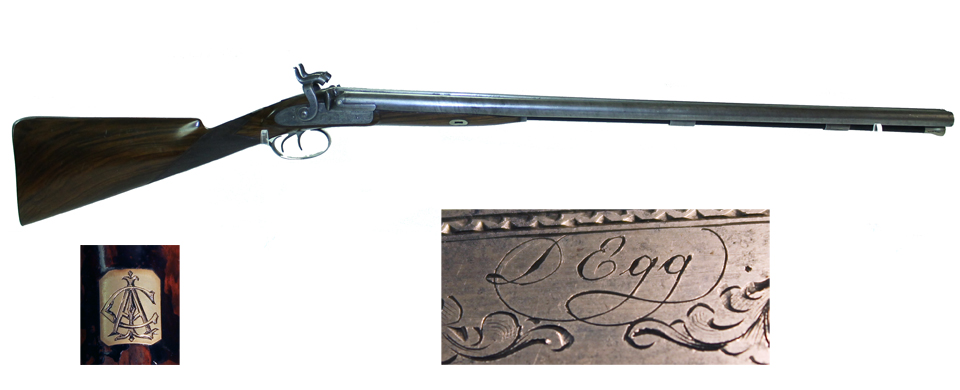 In New England, autumn sees the opening of hunting season for deer and upland game birds among other species. Several members of the extended Longfellow family engaged in hunting, probably none more so than Charles Appleton Longfellow, eldest child of the poet Henry Wadsworth Longfellow. The shotgun pictured above belonged to Charles, or Charley as his family referred to him, and it traveled around the globe with him on hunting expeditions.
In New England, autumn sees the opening of hunting season for deer and upland game birds among other species. Several members of the extended Longfellow family engaged in hunting, probably none more so than Charles Appleton Longfellow, eldest child of the poet Henry Wadsworth Longfellow. The shotgun pictured above belonged to Charles, or Charley as his family referred to him, and it traveled around the globe with him on hunting expeditions.
The gun, a double barreled muzzle loading shotgun, was made by the Durs Egg company. Durs Egg was a Swiss born gun maker who established his business in London in 1772 after learning the trade in Switzerland and France. Known for his innovative designs and quality workmanship, Egg was so highly regarded that he was appointed the official gunmaker to the Prince of Wales (later King George IV).
Based on markings on the barrel, this shotgun was made sometime between 1816 and 1838. The fact that it used percussion caps as the method of ignition places it later in this period, probably sometime during the 1830s. Exactly when Charley Longfellow acquired the piece is unknown, but he owned it by 1868 when he took the shotgun to India with him, where he spent considerable time hunting various animals including tiger, leopard and black buck. In an 1869 journal entry Charley mentioned the gun while recording his experiences bird hunting in India, writing "the little "Egg" shoots as hard as ever." Charley apparently took the gun with him to Japan as well in the 1870s, where he participated in shooting matches and was awarded a pewter cup as a prize for a third place finish. A small silver inset featuring Charley's monogram (visible in the image above) is placed on the top of the stock just behind the gun's dual hammers.
